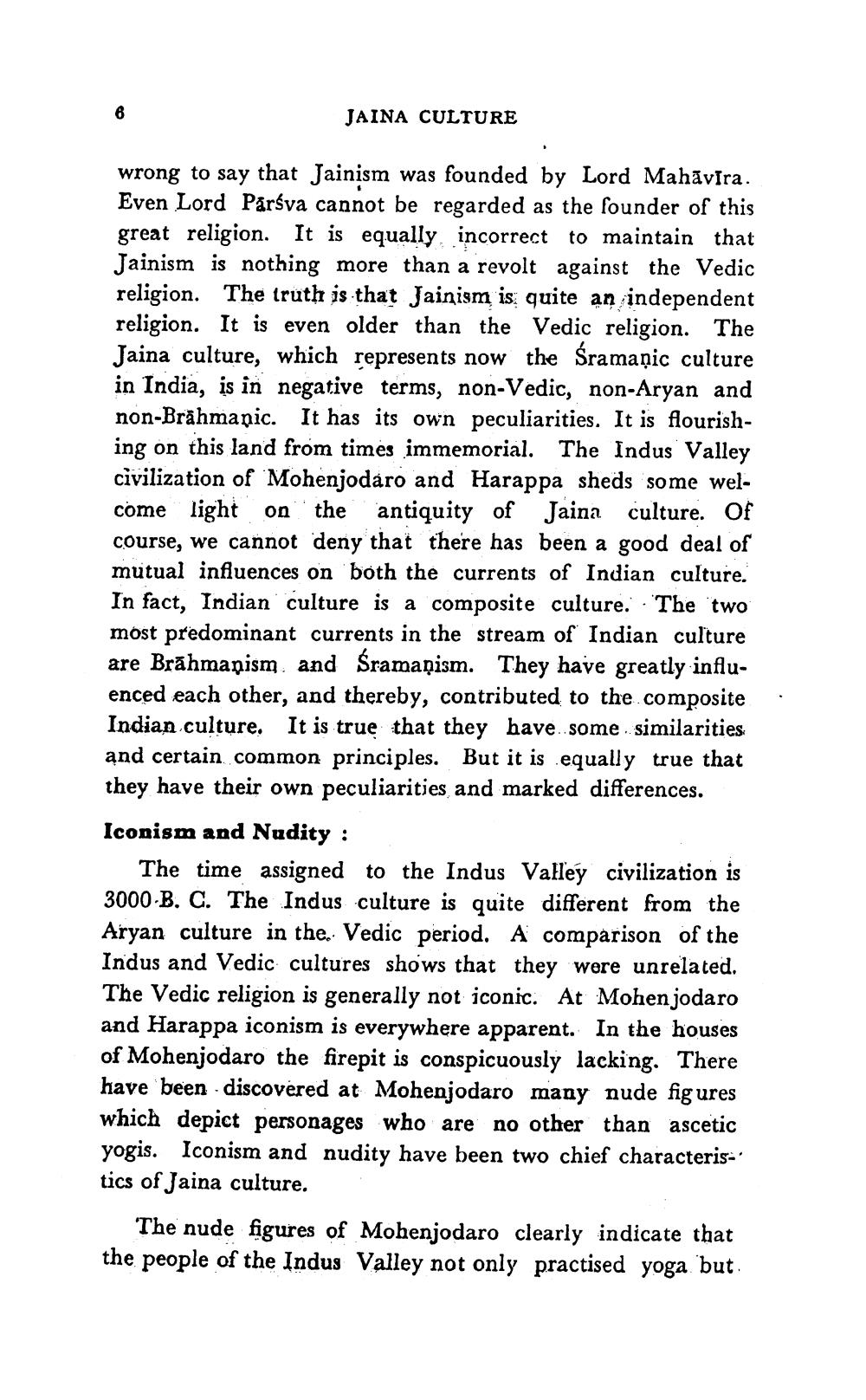________________
6
JAINA CULTURE
wrong to say that Jainism was founded by Lord Mahāvīra. Even Lord Parsva cannot be regarded as the founder of this great religion. It is equally incorrect to maintain that Jainism is nothing more than a revolt against the Vedic religion. The truth is that Jainism is quite an independent religion. It is even older than the Vedic religion. The Jaina culture, which represents now the Śramanic culture in India, is in negative terms, non-Vedic, non-Aryan and non-Brahmanic. It has its own peculiarities. It is flourishing on this land from times immemorial. The Indus Valley civilization of Mohenjodaro and Harappa sheds some welcome light on the antiquity of Jaina culture. Of course, we cannot deny that there has been a good deal of mutual influences on both the currents of Indian culture. In fact, Indian culture is a composite culture. The two most predominant currents in the stream of Indian culture are Brahmanism and Śramanism. They have greatly influenced each other, and thereby, contributed to the composite Indian culture. It is true that they have some similarities and certain common principles. But it is equally true that they have their own peculiarities and marked differences. Iconism and Nudity :
The time assigned to the Indus Valley civilization is 3000 B. C. The Indus culture is quite different from the Aryan culture in the. Vedic period. A comparison of the Indus and Vedic cultures shows that they were unrelated. The Vedic religion is generally not iconic. At Mohenjodaro and Harappa iconism is everywhere apparent. In the houses of Mohenjodaro the firepit is conspicuously lacking. There have been discovered at Mohenjodaro many nude figures which depict personages who are no other than ascetic yogis. Iconism and nudity have been two chief characteristics of Jaina culture.
The nude figures of Mohenjodaro clearly indicate that the people of the Indus Valley not only practised yoga but.




